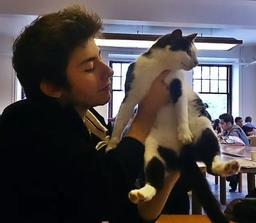In the past, Turkish used to have a verb 'to be', imek. But in Modern Turkish, it only appears coupled with other suffixes and it mostly has the form y.
A copula, is a form that attaches to nouns and verbs. Its function is to tie the subject of the sentence to the predicate of the sentence. For example, when you say "Kamil is stupid.", Kamil is the subject. Stupid is the predicate. "is" is the copula that links them and gives this sentence meaning. Thanks to is, we know that being stupid is done by Kamil.
In Modern Turkish, that imek turned into a copular marker y.
The suffixes that this copula attaches to are: -Dİ, -mİş and -sE. If the word that these are attached to ends with a vowel, the form becomes -(y)Dİ, -(y)mİş and -(y)sE. If it ends with a consonant, then we just simply drop the y. In this lesson, you will learn about -(y)Dİ.
You have already learned that in the present tense, English and Turkish differ, as Turkish has no overt copular marker.
| That car is new. | O araba yeni. [Lit.] That car new. |
But what if you want to say this sentence in past tense? Well, that is when we use the past copula.
| That car was new. | O araba yeniydi. |
The past copula is used to turn nouns or adjectives into predicates, like in the example above. It also follows other tense or aspect suffixes to create more complex meanings. In this lesson you will only see the combination of the aorist and the past copula.
When the aorist suffix is combined with the past copula, it creates a unique meaning that we get from sentences like "I used to smoke." in English. So hereafter I refer to it as the used-to construction. Let's see an example:
| English | Turkish |
|---|---|
| I used to smoke. | Sigara içerdim. |
The aorist suffix is in italic, and the copula is in bold. The aorist suffix refers to how the action has been realised (in this case, generally, often, at regular intervals) and thus is considered to be the aspect marker. The copula gives information as to when this action happened (in this case, the past) and thus is considered to be the tense marker. It is possible to combine tense, aspect and mood markers. However it's not possible to combine two aspect markers in a row, or two tense markers in a row. That's why 'yap-ar-ıyor' (two aspects) and 'yap-tı-acak' (two tenses) are ungrammatical.
We usually enhance the idea of pastness by inserting adverbs such as eskiden (in the past) , küçükken (when I was little), gençken (when I was young).
| English | Turkish |
|---|---|
| In the past, you used to eat meat. | Eskiden et yerdin. |
Now you can move on to the practice session to see more examples of the used-to construction.

